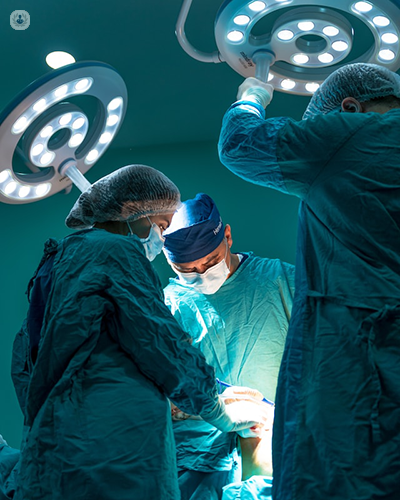Is laparoscopic gallbladder removal safe for patients with a high BMI?
Written in association with:Gallbladder removal, or cholecystectomy, is a common surgical procedure performed to treat gallstones or gallbladder inflammation. For patients with a high body mass index (BMI), the idea of undergoing surgery can be intimidating due to concerns about safety and recovery. However, laparoscopic gallbladder removal has proven to be a safe and effective option, even for those with a high BMI.
Renowned consultant general surgeon Mr Luca Bonomo explains what you need to know.

What is laparoscopic gallbladder removal?
Laparoscopic gallbladder removal is a minimally invasive surgery where small incisions are made in the abdomen to access and remove the gallbladder. A camera, called a laparoscope, is inserted through one of these incisions, allowing the surgeon to see inside the abdomen and guide the procedure. This approach is less invasive than traditional open surgery, which requires a larger incision.
The minimally invasive nature of laparoscopic surgery generally means less pain, faster recovery, and lower risks of complications such as infections.
Can patients with a high BMI safely undergo this surgery?
Yes, patients with a high BMI can safely undergo laparoscopic gallbladder removal. In fact, laparoscopic techniques are often preferred for this group of patients. Studies have shown that the procedure’s safety profile is excellent, even for those with obesity. Surgeons are well-equipped to manage the specific challenges that may arise, such as ensuring clear visualisation of the surgical area and carefully handling tissues.
While a high BMI can slightly increase the risk of complications, modern surgical techniques and anaesthetic advancements significantly mitigate these risks.
Are there additional benefits of laparoscopic surgery for high BMI patients?
Patients with a high BMI often benefit more from laparoscopic surgery than from traditional open surgery. The smaller incisions reduce the risk of wound infections, a complication that can be more common in individuals with higher body weight. Additionally, recovery time is typically shorter, allowing patients to return to normal activities more quickly.
The reduced strain on the body from a minimally invasive procedure also lowers the likelihood of issues like blood clots or respiratory complications, which are sometimes associated with obesity.
What should patients know about preparation and recovery?
Preparation for laparoscopic gallbladder removal may involve preoperative assessments, including blood tests and imaging, to ensure you’re a good candidate for surgery. If you have other medical conditions related to your weight, such as diabetes or hypertension, these will be managed carefully before and after the procedure.
Recovery typically involves minor discomfort and a gradual return to your daily routine within a week or two. Your surgical team will provide specific instructions for wound care, diet, and activity levels to promote healing and reduce risks.
Laparoscopic gallbladder removal is a safe, effective, and widely recommended option for patients with a high BMI. With proper care and preparation, you can expect positive outcomes and a smoother recovery.
If you are considering a laparoscopic gallbladder removal and would like to book a consultation with Mr Bonomo, do not hesitate to do so by visiting his Top Doctors profile today.


